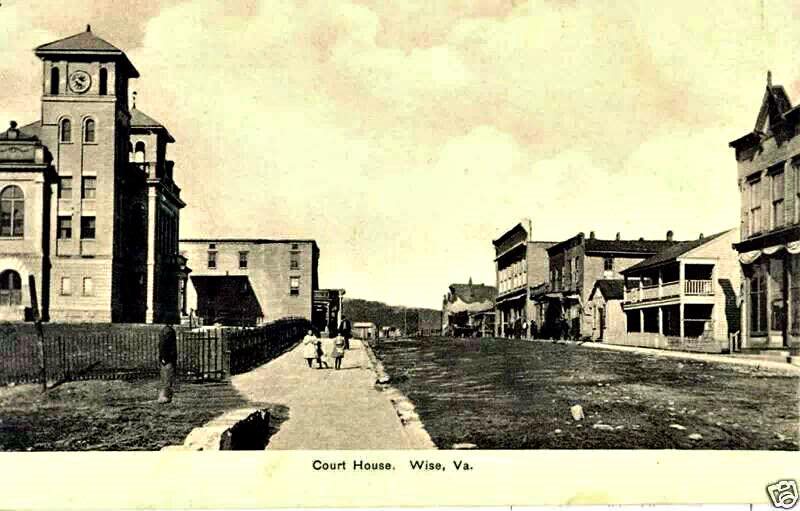Doctor Taylor would eventually make his way to Bluefield, West Virginia and be apprehended by the Deputy Sheriff Moushan and would be turned over to Baldwin detective agency near Pearisburg, Virginia after an arrest warrant was finally issued by the Judge in Giles County, Virginia. The apprehension would take place on a south bound train in Pearisburg, Virginia on or about the 20th of July. Doctor Taylor would then be returned to Wise County to stand trial on the 26th of July. But when he appeared in court on August the 2nd the indictment against him was quickly quashed and thrown out of court. The first witness on the stand would be Robert Mullins, one of the first men on the scene.
New Indictment
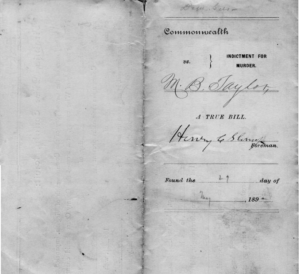
Commonwealth attorney Robert Bruce acted quickly handwriting a new indictment and presented it to the July 26th Grand Jury. Taylor was then brought back into court to answer this new indictment. The defense objected because they were given no time to prepare for the new indictment.
The objection was overruled. Doctor Taylor’s defense then moved that the trial be moved to the circuit court, and a trial date was set for September 5th. It is our belief that Taylor’s defense made a grave error in doing this which we will explore in a later video.
Judge Morrison
Gate City native Judge H.S.K. Morrison was the presiding circuit judge at the time. But for some reason Judge Morrison declined to hear the case. Charles Johnson speculates in his book that Judge Morrison recused himself because Doctor Taylor had treated him or a family member in the recent past. But if this is true, why did Judge Morrison hear the later re-sentencing trial?
Jury Selection
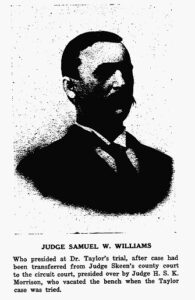
On September the 5th Judge Samuel W. Williams impaneled a jury, although there was some difficulty in doing so. We may go into this jury selection in another video as there is some importance in its selection. Namely that several potential jurors were accused of having questionable conscientious scruples and summarily dismissed from the jury for this case. Those “scruples” were that they were opposed to the death penalty.
Charles Johnson’s Book
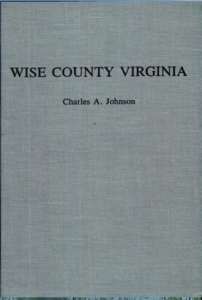
Now let’s begin by once again turning to the words of Charles A Johnson from his 1938 book “The Narrative History of Wise Virginia.
Was the “Red Fox” proven guilty beyond all reasonable doubt of the crime of which he was charged? Was the verdict of the jury rendered against him a just verdict? Was the action of the Supreme Court of Appeals, in refusing the prisoner a new trial and affirming the judgment of the lower court, sound and beyond criticism?
There has been much conflict and diversity of opinion among the older class, that has been handed down to the young generation, as to just what the evidence really was on which the jury passed their verdict of guilt.
Please Note
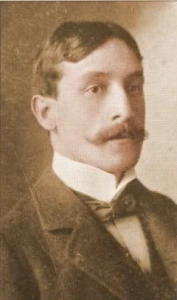
Please Note— In part of this story, the questions asked of the witness are fictional. Because at the time of the Taylor trial, short-hand reporting had not come into popularity nor was court reporting efficiently done.
In making a transcript of evidence, to be used in an appeal to the State Court of Appeals, the lawyers would write out the evidence of each witness, in narrative style. These transcripts were not done in the present-day question and answer style. If the lawyers could not agree on a testimony, the judge would write the transcript of the disputed evidence recording the question. This is done only once in this transcript.
TESTIMONY OF ROBERT MULLINS, witness for the Commonwealth.
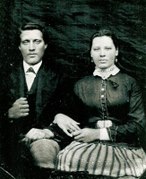
(Note Robert Mullins and Magistrate John Vint Bentley conducted the official crime scene investigation)
The witness testified that he lived in Kentucky about three miles from Pound Gap, and he had seen the place where Ira Mullins and others were killed.
When did you arrive?
The witness replied, “that he went to said point about one and one-half hours after the killing.”
What did you see or discover?
The witness said, “that he found there the bodies of Ira Mullins and his wife, John Chappell, Wilson Mullins and Greenberry Harris, all were dead.”
Robert Mullins was then asked what did you do then?
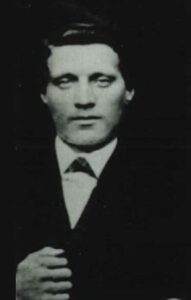
The transcript states “Witness examined the body of Ira Mullins, he had been shot eight times; there were two wounds in the chin, one in the head, one on the shoulder. one in the wrist, one in the side which passed through his body, one in the bowels, one in the thighs and legs,”
The witness is then asked where the bodies were found.
The transcript states “at the time the witness got there the bodies of Ira Mullins, John Chappell, and Greenberry Harris were in the wagon. Mrs. Ira Mullins was about five feet away from the wagon, and Wilson Mullins was about fifteen steps from the wagon.”
Mr. Mullins was then asked about the wagon or the horses.
The transcript states “The two horses hitched to the wagon were shot and killed.”
The witness is then asked if he had examined the place from which the shooting had occurred.
The transcript says “The Witness examined the place from where the shooting was done, and found two large rooks on each side, and in front, next to the road, a wall had been built up between the two large rocks, to about the height of a man’s waist.”
The witness was then asked how far the wagon and bodies were from the point at which the shooting had occurred and what did it look like?

He replied “This point was from 15 to 25 steps from the road. Some brush had been cut and stuck up by the rocks, the leaves of which had wilted, and looked like it might have been cut a week. There was a little path leading off from there toward the road saw no tracks;”
The witness was asked if he had noticed anything else or found anything there?
He replied “saw a small heap of pine knots;”
The witness was asked if there was anything special about the pine knots or if he found anything under them?
Robert Mullins replied “found six cartridge hulls, two of which witness exhibited to the jury, which were 45-75 caliber. The whole six were of the same size. These cartridge hulls looked like they had been laid down and covered over with a few leaves.”
Narrative Side Bar
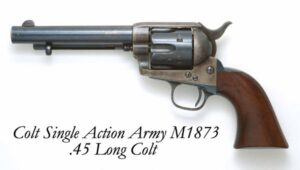
Here we must stop for a moment and look at this statement. When the trial began Doc Taylor’s rifle had not been entered into evidence. Indeed, the July 26th indictment states that Taylor had killed Ira Mullins with his pistol.
But by the time of the September 5th trial, it was discovered that the ammunition casings found at the crime scene did not match Doc’s 2 Colt 45 pistols as they were center fire. Recently we have been questioned about our claim that the shell casings found at the crime scene were rim fire ammunition. To prove our claim, we turn to some valuable information from the various gun collector websites and to two of the four affidavits attached to this court transcript.
We know from various websites that when Doc Taylor’s rifle is finally entered into evidence it is examined by deputy John Miller who was a local gunsmith. The rifle was then dry test fired using a shell casing found at the crime scene.
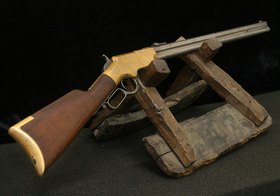
The firing pin struck the shell casing “just off center”. According to the various gun enthusiast web sites, this would occur IF the shell casing were too small for the rifle. The oft told tale says that the shell casings were 45 govt which makes sense, as these websites tell us that this type of ammunition was in reality a rim fired 44 that came about due to a hoax played on the government. For more about this look for our video and webpage titled Doc’s Gun.
Three jurors, WM Wolf, P Debusk, and E Tate asked for and was granted permission to examine Dr. Taylor’s rifle. The only reason we know this is that they dismantled the gun and either could not or would not use a part when reassembling the rifle. These men were forced to sign an affidavit on this issue, they omitted the missing part from the affidavit. We only know this because of the affidavits from sheriff Holbrook and deputy Miller.
However, the final proof that the ammunition was rim fire is found in the affidavit from a fourth juror named I N Mills. He states that he and another juror named F P Graham examined the gun after it was disassembled and saw that the gun had been recently tampered with as to make it strike center instead of the side.
He also states that he and Graham only voted guilty because of this examination. After all that we have found while researching The Killing Rock. We believe that the testimony of Robert Mullins and others were changed to match the rifle.
We also believe that this is reflected in further testimony given about gun ownership. However, a mistake was made, in one testimony Henry Adams is said to own a 44×75 a rifle that did not exist. At least two times later Henry is said to own a 45×75. Here is the problem, at the time of the trial the only rifle capable of shooting the 45×75 ammunition was the 1876 Centennial Winchester rifle. These rifles were extremely rare. Yet testimony is given in this transcript that states that hundreds of these rifles were owned in Kentucky.
Court Back in Session
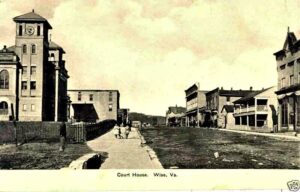
We now resume the testimony of Robert Mullins.
The witness was asked do you know the caliper of Dr Taylor Gun?
The transcript says “Witness does not know the size of Dr. Taylor’s gun;”
Mr. Mullins was then asked do you know anyone who owns a gun of that size?
The transcript says he “knows of two guns in Kentucky of 45 by 75 caliber, one of which belongs to James Potter and the other to Henry Adams.”
The witness is then asked about the location of the shooting and how far away were the nearest houses.
He replied, “The point where the parties were killed is in Wise County, about from one-fourth to one-half mile from Pound Gap, in the woods, and the nearest house to the point about one mile, at the foot of the mountain.”
He was then asked about Louanza Mullins and how she was found.
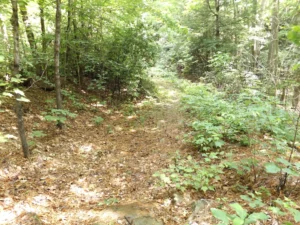
To which Mr. Mullins replied “Mrs. Mullins was lying with her apron thrown up over her head.
Robert Mullins was then asked if he or someone else had arrived first.
The transcript says, “Witness understands that Jemima Harris and Elizabeth Branham had been to the bodies before he got there.”
Mr. Mullins was then asked if he knew why Ira had been found in the wagon.
The transcript tells us he replied “Ira Mullins was paralyzed—could not feed himself and had to be hauled from place to place in a wagon;”
He was then asked when and where he had last saw Ira Mullins.
The transcript tells us “Witness saw Ira Mullins on Wednesday or Thursday before he was killed; he was then in Kentucky.”
Robert is then asked where James Potter and Henry Adams lives
The transcript says “James Potter lives some ten to twelve miles from the place of killing. Henry Adams about four miles from said place.”
Finally, Mr. Mullins is asked about the whereabouts of Henry Adams.
The transcript tells us “Do not know where Henry Adams now lives, he is said to be dodging.”
The witness is excused and this concludes the first testimony of the case.
Thank You
We at Kentucky Tennessee Living would like to thank you for watching our series on The Killing Rock. Don’t forget to hit that like button as the more likes we receive the more likely YouTube is to suggest our videos to other viewers. Also, to receive notice when we upload a new video be sure to subscribe and click the bell notification.
We thank you for continuing to support Kentucky Tennessee Living. As we bring to you the history of the Appalachian Mountains. We must remind everyone that the story names Killing Rock: The Oft Told Tale (s) and Killing Rock: The Untold Story and Killing Rock: the Trial are all under Kentucky Tennessee Living copyright.
Source Information
A Narrative History of Wise County, Virginia By Charles A. Johnson Pub. 1938. The Trail of the Lonesome Pine by John Fox Jr. Pub. 1908 | AmmoGuide, | .44 Henry| Wikipedia, | .44 Henry Cartridges Winchester rifle Wikipedia, | .44-40 Winchester Ballistics GunData.org, | THE CARTRIDGE COLLECTOR .44Henry | Real Guns Winchester Model 1873 Short Rifle, | .45 Schofield Wikipedia, | Richmond dispatch. (Richmond, Va.) August 02, 1892, « Chronicling America « Library of Congress, | SHOOTING the Swiss Vetterli Infantry Rifle | Pensacola Fishing Forum New life for an old soldier | MILITARIA.ES 44WCF | Winchester Model 1873 Carbines For Sale by LeRoy Merz | Antique Firearms Winchester Model 1873 Repeating Rifle | stevespages.com 1873: Year of the Guns | Taylor& Co. Trapdoor Carbine Sporting Rifle and Colt Single Action Army | Guns of the Old West | COLLECTOR’S CORNER: WINCHESTER MODEL 1873’S BY RAY HOUSE |Winchester rifle Model 1873 Wikipedia, | Winchester Collector | RareWinchesters.com… A private collection of rare and historic Henry and Winchester repeating arms| The Winchester Repeating Rifle, The Gun That Won The West Antique Ammo | Western Frontier Collectible.\Photographs of the Killing Rock area was taken by Joanna Adams Sergent
Copyright and Other Information
All photos are in the public domain unless otherwise noted. This includes photos dated before 1923. All other photos are used with permission or under the education fair use statute of the US copyright law.
Copyright 2022 Kentucky Tennessee Living
kytnliving.com/copyright-2/
Social Media Pages
For more about us, you can visit our Facebook page:
https://www.facebook.com/kytnliving
Our Twitter page:
https://www.twitter.com/KYTNLiving
Our YouTube Channel:
https://www.youtube.com/kytnliving
When we forget our past and who we are as a people, then we become who “they” say we are. ~~ David Sergent
I have attended the University of Kentucky. I have an Associates Degree from Hazard Community College and Technical School. I have also attended the University of Pikeville. I have taken several classes in Journalism as well as in the Appalachian History, Literature, and Sociology during my time at those schools.
I was born in Florida and grew up in Burdine, Kentucky. I have been married to David W. Sergent since May 4, 2013. I have two children and four grandchildren from a previous marriage. I currently live in Tennessee but my hope is to one day come back home to live in the beautiful mountains once more.


